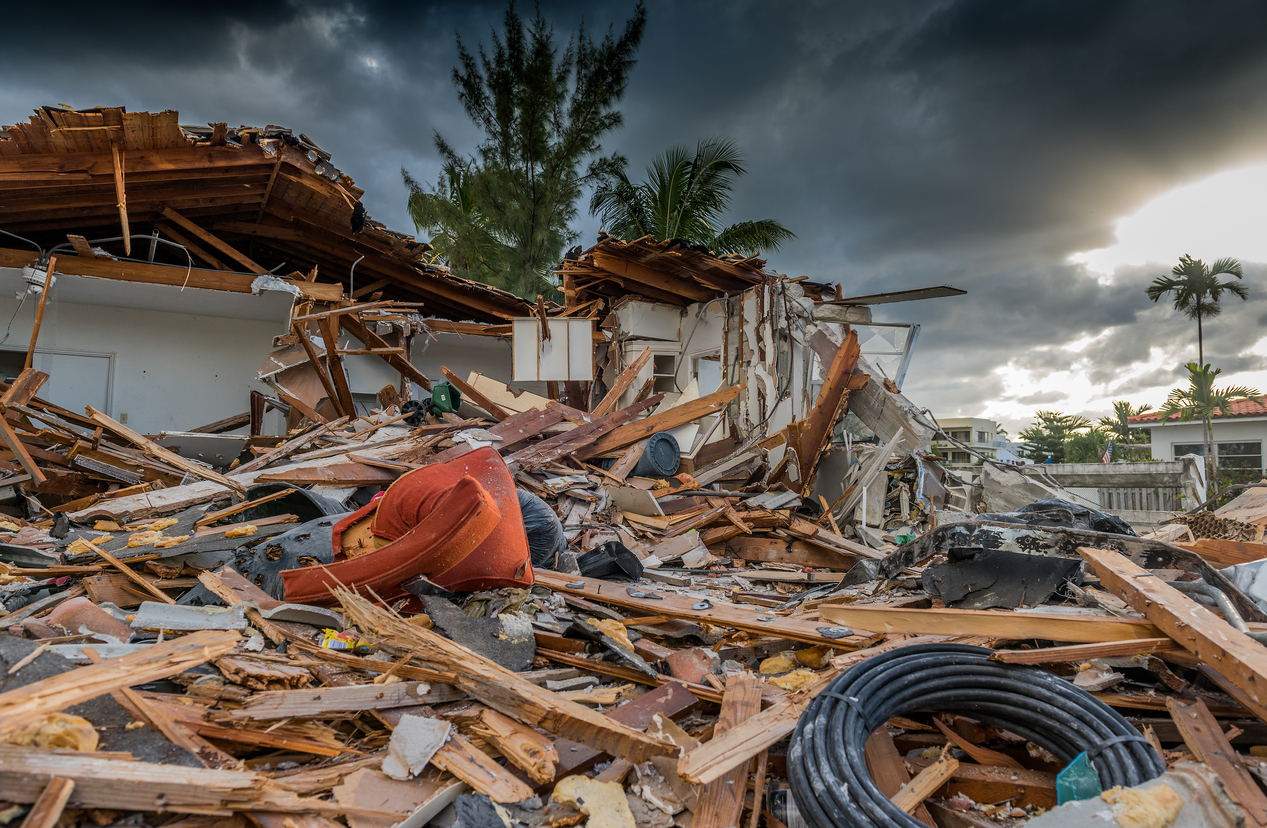Based on an analysis of ensemble footprints in Version 21 of the RMS North Atlantic Hurricane Models, the overall industry loss estimate for Ian includes wind and storm surge losses in Florida, South Carolina, North Carolina, Georgia, and Virginia. RMS ensemble footprints are Ian's hazard reconstructions that account for the uncertainties in observed winds and storm surge. The industry estimate also includes the effects of precipitation-induced inland flooding in the same areas, based on footprints from the RMS U.S. Inland Flood HD Model.
"Ian was a historic and complex event that will forever change the Florida insurance market." Given the event's complexity and the multiple causes of loss, our ability to deploy multiple RMS field reconnaissance teams to conduct damage assessments throughout Florida, including the heavily affected areas of Fort Myers and Cape Coral along Florida's southwest coast, was a critical component of our analysis. Their analyses have been invaluable in assisting our modeling teams in reconstructing and validating the extent and severity of Ian's wind and water impacts, as well as our assessment of the magnitude of the various drivers of total industry loss," said Mohsen Rahnama, Chief Risk Modeling Officer, RMS.
The RMS estimate includes property damage, contents, and business interruption losses in the residential, commercial, industrial, automobile, infrastructure, watercraft, and other specialty lines. Given the event's complexity and the multiple loss drivers, our ability to combine our detailed review of satellite and digital imagery with the deployment of multiple RMS field reconnaissance teams proved critical in establishing losses across the various business lines. The estimate also takes into account the effects of post-event loss amplification (PLA), inflation, and non-modeled sources like the Assignment of Benefits and litigation.
Much of the building stock impacted by Ian was also impacted to varying degrees by Hurricanes Irma and Charley in 2004. Roofs or structures were replaced in some cases after Irma and performed well in Ian. Where buildings have not been updated to current codes, Ian's destructive wind and storm surge will result in widespread roof replacements or total losses. We also considered key aspects of the Florida Building Code during the loss estimation process, such as mandatory limit extensions for ordinance and law, as well as the application of the 25 percent roof replacement rule. Apart from property damage, we anticipate significant losses to automobile and watercraft lines as a result of fewer evacuations in the worst-affected region," said Jeff Waters, Staff Product Manager, Product Management, RMS.
"A significant portion of Ian's losses will be attributed to post-event loss amplification and inflationary trends." A combination of high claims volume, additional living expenses incurred as a result of the massive evacuation efforts, prolonged reconstruction in the worst-affected areas, and the prevalent higher-than-average construction costs will contribute to a significant economic demand surge. Furthermore, despite recent legislative efforts to limit their abuse, we expect Assignment of Benefits and litigation to influence overall loss severity, particularly in cases where coverage leakage of water losses onto wind-only policies is likely. All of these social inflation factors will exacerbate loss adjustment expenses and corresponding claim costs in this event," said Rajkiran Vojjala, Vice President, Model Development, RMS.
The RMS view of NFIP policy-in-force data published by FEMA, the Version 21 RMS North Atlantic Hurricane Models, and the RMS U.S. Inland Flood HD Model result in losses to the National Flood Insurance Program of approximately US$10 billion. While NFIP policy take-up is high in many coastal areas affected by Ian (up to 50 percent), inland flooding areas typically have low (less than 10 percent) NFIP participation.
Wind is expected to account for the majority of total insured losses from Ian, according to RMS. However, surge and flood will account for a significant portion (up to 25%) of total insured losses (including NFIP). While residential lines will drive insured wind losses and NFIP losses, commercial, industrial, and automobile lines will dominate surge and inland flood losses in the private market.
In addition to the United States, Hurricane Ian caused havoc in the Caribbean, particularly in Cuba, with high winds, heavy rain, and flooding. While the event caused severe economic and infrastructure damage in many areas, RMS estimates insured losses in Cuba will be minimal due to the region's low insurance penetration.
Ian made landfall near Cayo Costa, Florida on Wednesday, September 28, as a powerful Category 4 hurricane on the Saffir-Simpson Hurricane Wind Scale. According to the National Hurricane Center, Ian produced sustained winds of 150 miles per hour (240 km/h) at landfall. After slowly moving across central Florida, it emerged over the Atlantic before making a second landfall as a Category 1 hurricane near Georgetown, South Carolina on Friday, September 30. Ian brought damaging hurricane-force winds to a wide swath of southwest and central Florida, as well as catastrophic storm surge along the southwest Florida coastline and widespread inland flooding across Florida and the Carolinas.
Hurricane Ian was the ninth named storm of the 2022 North Atlantic hurricane season, as well as the fourth hurricane and first named storm to make landfall in the United States this season. Ian was the first major hurricane to make landfall in Florida since Hurricane Michael in 2018, and the seventh major hurricane to make landfall in the United States since 2017. (Harvey, Irma, Michael, Laura, Zeta, Ida). The 2022 North Atlantic hurricane season is less than two months old, with the season officially ending on November 30.













